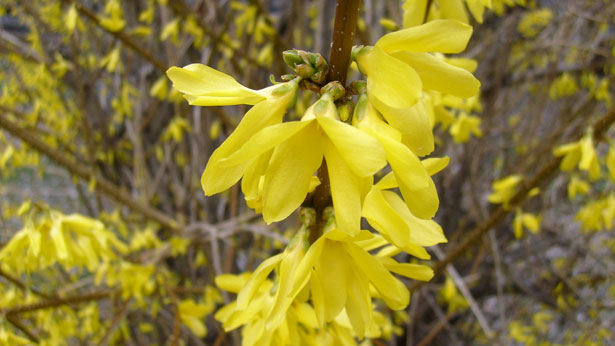If your bush is terribly overgrown already, you can cut the entire bush nearly to the ground. About four inches is a good amount to leave behind; it will grow new, flexible branches during the summer and fall, and by the next year, it will be looking good again. If the bush doesn’t need that much help, just cut the oldest branches off as close to the ground as you can. Also cut out any broken or damaged branches, as well as any that cross and rub each other. Ideally, you’ll remove about ¼ to 1/3 of the branches each year.
Lilacs can be treated the same way; these flowers also bloom on one-year-old wood. Cutting an old one nearly to the ground works to rejuvenate it in a hurry. If you don’t much mind waiting a little longer, start by cutting out any branches thicker than 2”. The ideal is to have 8-12 branches of different ages; you’ll get the most blooms that way. This also means you don’t need to prune much during its first few years. Almost any shrub that blooms in spring, bloom on ‘old wood’. Other shrubs that bloom on old wood, and so do best if pruned right after blooming, include big-leaf hydrangea, English holly, flowering quince, some clematis, some roses (old varieties), and most climbing roses.
Related posts:
Will Frost Damage Wipe Out My Tree Fruit?
How to Prune and Fertilize Fruit Trees, shrubs, and landscape trees
Selecting and Using Inorganic Fertilizers
Fertilizing Fruit Trees
Understanding Fertilizer, Knowing Your Backyard Weeds, and free cooking e-books

 RSS Feed
RSS Feed